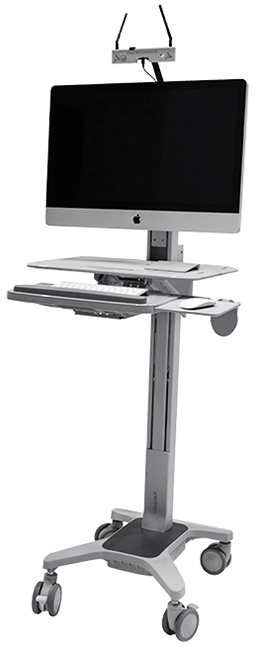Verasense™
VERASENSE™ Sensor-Assisted Total Knee Replacement

VERASENSE ™, a wireless orthopaedic sensor device used during primary and revision total knee replacement (TKR), enables surgeons to make evidence-based decisions on soft tissue balance and implant position - two factors that can improve patient outcomes. 1,2
Benefits of Sensor-Assisted TKR

Patients whose knees were balanced using VERASENSE Sensor-Assisted TKR have shown statistically significant improvements over patients whose knees were left unbalanced. Patients whose surgeon uses VERASENSE sensor-assisted technology during primary or revision TKR may experience:
- Less Pain
- Quicker return to normal activity
- Improved knee function
- Improved patient satisfaction1,2
How Does VERASENSE Work?
The disposable sensor device leverages technology similar to those used in smartphones and gaming applications. TKR is a common procedure, but before VERASENSE, surgeons generally relied on their “best judgment” in determining what “felt” like a balanced knee.
During your TKR procedure, your surgeon uses VERASENSE to replace the standard tibial trial spacer. As the knee is taken through a full range of motion, the sensor sends data wirelessly to a monitor in the operating room, which provides information on compartmental loads within your knee. With the use of the the real-time data from the sensor, VERASENSE aids in your surgeon’s decision-making about soft tissue adjustments and implant position. Improper soft tissue balance and implant position may result in premature implant failure and the need for revision surgery in the future. 3-6
VERASENSE does not change surgical workflow or a surgeon’s decision on which implant design would be best for you. The procedure is the same, but with the use of the intraoperative data from this sensor device, surgeons aim to improve the balance and stability of your knee, allowing for improved patient outcomes when compared to a traditional TKR and the potential for a longer lifespan of your knee implant. 1-6
VERASENSE Animation:
OrthoSensor VERASENSE Overview: Benefits of Sensor-Assisted Knee Replacement Surgery from OrthoSensor, Inc. on Vimeo.
VERASENSE is manufactured by OrthoSensor, Inc.
References:
1. Gustke KA, et al. Primary TKA patients with Quantifiably Balanced Soft-Tissue Achieve Significant Clinical Gains Sooner than Unbalanced Patients. Adv Orthop. 2014:628695.
2. Gustke K, et al. Increased Patient Satisfaction After Total Knee replacement using sensor-guided technology. Bone Joint J. 2014 Oct;96-B(10):1333- 8.
3. Parratte S, Pagnano MW. Instability after total knee arthroplasty. J Bone Joint Surg Am 2008; 90: 184–94.
4. Lombardi AV Jr1, Berend KR1, Adams JB1. Why knee replacements fail in 2013: patient, surgeon, or implant? Bone Joint J. 2014 Nov;96-B(11 Supple A):101-4.
5. Bozic KJ, Kurtz SM, Lau E, Ong K, Chiu V, Vail TP, Rubash HE, Berry DJ. The epidemiology of revision total knee arthroplasty in the United States. Clin Orthop Relat Res.2010; 468(1):45–51.
6. Rodriguez-Merchan, EC. Instability Following Total Knee Arthroplasty. HSS J. Oct 2011; 7(3): 273–278.

